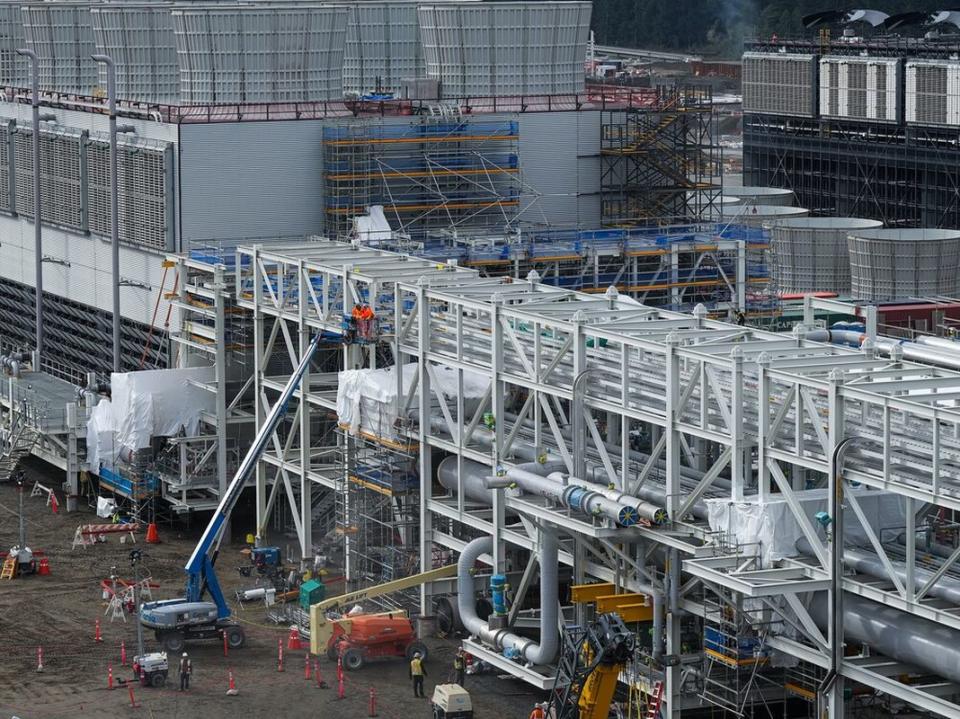Philip Cross: The figures show Canada needs more LNG projects

After years of planning and construction, the first major liquified natural gas (LNG) project in British Columbia — LNG Canada’s export terminal in Kitimat — is about to be completed. The $18-billion investment is supplied by a pipeline from northeastern B.C. The terminal’s imminent completion is already stoking interest in other LNG projects, including the Cedar LNG project also at Kitimat (a joint venture of the Haisla Nation and Pembina Pipeline Corp.), the Woodfibre LNG terminal near Squamish, Ksi Lisims LNG on Pearse Island, a floating export facility, as well as a possible Phase 2 of the LNG Canada project.
To help understand the benefits of more LNG projects, a study I’ve just completed for Resource Works documents the impact on the B.C. and Canadian economies of a $4.1-billion LNG project. The $4.1-billion figure is an estimate of the annual investment made by a large LNG project that ultimately may total tens of billions of dollars over the decade such undertakings typically take to complete. Conversely, if nothing does take the place of the LNG Canada investment now winding down, the estimates can be used to approximate the loss of GDP and jobs that will occur as LNG investment dries up.
The $4.1-billion investment directly boosts GDP by $4.5 billion, according to a simulation using Statistics Canada’s Input/Output model. The multiplier effect of 1.09 reflects both purchases of inputs from other industries and higher consumer spending as incomes rise. The higher output generated requires the employment of 35,336 more people. Governments also benefit from the development of natural gas. In B.C., royalties have grown from just $169 million in fiscal 2012-13 to $684 million in 2023-24, and are projected to generate $23 billion of government revenue over the estimated 40-year life of the LNG Canada project alone.
Investor interest in building LNG projects in B.C. reflects a number of cost advantages. Natural gas prices remain low in North America. Diverting exports from the U.S. market, where prices recently have been below US$2 per million metric British thermal units (mm/btu), to Asia, where natural gas sells for US$10 or more, is currently very attractive, given that a price differential of only US$6 per mm/btu is needed to cover the cost of liquefying the feedstock and shipping it.
B.C. has other cost advantages, too. Its cooler climate means liquefying the gas is cheaper than in Australia or Qatar. Shipping costs are also lower, B.C. being closer to many Asian markets than competitors on the U.S. Gulf Coast, Qatar or even Australia. Yes, B.C. ports are closer to Northeastern Asian markets (such as Japan, South Korea and parts of China) than Australian ports are.
In a 2021 study, Bank of Canada researchers also concluded that LNG projects pay off for Canada. They “benefit the country’s energy sector and improve its terms of trade. By building LNG export facilities, Canadian producers would be provided with a new outlet for domestic natural gas supply. This would help Canada diversify its export market away from the United States, whose demand for Canadian natural gas is trending down as it becomes more self-sufficient in natural gas supply.”
The benefits of LNG development extend far beyond the initial investments, however. The projects are going ahead because they will support higher production of natural gas for decades and take advantage of higher prices in overseas markets, especially Asia. This higher anticipated return explains why companies are willing to risk billions of dollars in investments whose inherent uncertainty was demonstrated by how the rapid growth of American LNG exports shifted the industry from long-term fixed-price contracts to short-term and spot-based transactions.
The attractiveness of building LNG facilities in Canada recently received a boost from the Biden administration’s decision to freeze approvals for new U.S. export plants, which prompted Energy Minister Jonathan Wilkinson to say it presented “an opportunity” for Canada to boost exports. Complacency is hardly in order, however. The U.S. rapidly increased its LNG exports in response to Europe’s boycott of Russian gas supplies after its invasion of Ukraine, and Biden’s ban does not stop work on the many projects that already have received the green light. Mexico also has plans to become a major exporter of LNG, even though it imports all its natural gas.
For years, Canada’s sluggish regulatory and policy response to opportunities to increase LNG exports helped shift investment and production to the U.S., which is now the world’s largest exporter of natural gas. A decade ago, dozens of proposals were circulating regarding LNG projects in B.C. and on Canada’s East coast, as well, but few went ahead. Canada now has an opportunity to win back some of the global LNG market from U.S. producers, thereby giving a much-needed boost to our prosperity while helping reduce Asia’s dependence on coal.
Financial Post
Philip Cross’ latest research paper is “From gas to growth: How LNG is bringing economic transformation to B.C.,” published by Resource Works.

 Yahoo Finance
Yahoo Finance 